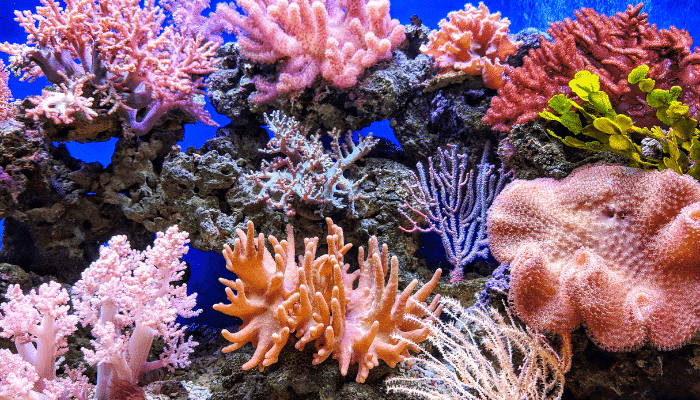Tropical coral reefs face bleak challenges in the years to come, according to a new study. A group of researchers, including palaeobiologist Prof. say that Acropora, the most common genus of coral with the most species, could lose the battle against human-caused climate change, which would cause underwater biotopes to be destroyed. Compared to other coral genera, Acropora is better able to withstand natural environmental influences. In point of fact, it even appears to take advantage of obstacles like tropical storms to improve its ecological success. Strong waves easily break off the Acropora corals’ delicate branches. The fragments are carried away by the water and deposited somewhere else, where many of them grow and establish new colonies over decades or centuries. This is how Acropora corals have spread for about more than 49 million years.

Issues that Acropora Faces –
However, as per the analysis of researchers and professors, the analyses suggest that Acropora only made up a small portion of coral reefs around two million years ago, when the ice age began. The genus did not become widely distributed until much later, drastically altering the composition of Acropora corals reefs. The massive shifts in sea level that occurred during this time period, the researchers believe, are to blame. “The reefs were suddenly so deep under water that they no longer received enough light as it became warmer during interglacial periods and the ice sheets partially melted,” the professor explains. Just Acropora became rapidly enough towards the sun.”
How Coral Reefs Are Wrecked –
The rule that determines a reef’s survival is simple, and the rapid growth of Acropora corals has remained an unbeatable advantage up until the present day: The corals must grow more quickly than they die in order for the biotope to last in the long run. Additionally, coral reefs are continuously destroyed. In addition to tropical storms, other organisms like parrotfish, sponges, and fungi cause even more damage. Acropora provides the ideal environment for other sea creatures by maintaining a positive balance sheet. Where there are a lot of Acropora corals, where they help spread the energy of the waves and protect the coast, there is more biodiversity.
Disappearance of Acropora –
The bleak outlook for Acropora’s future is starkly contrasted by the company’s success. It is especially delicate to an unnatural weather change and the related fermentation of the seas, vulnerable to infections and coral dying, and the favoured objective of the savage crown-of-thistles starfish. The coral reefs in the Caribbean have suffered greatly as a result of the rapid disappearance of acropora in recent decades. The researchers are of the opinion that it may soon face a similar situation in other marine areas, not the least of which is because of human influence. The fragile coral populations are suffering greatly as a result of warming waters brought on by climate change.
Increase in Coral Bleaching –
Coral bleaching is a stress response that corals have when the water is too warm. Corals are becoming bone-white and more susceptible to disease and starvation as a result of the expulsion of their symbiotic algae as a result of rising ocean temperatures. If the water temperature does not return to normal, bleached corals will likely perish from starvation. As a result of climate change, the oceans are warming, leading to an increase in the frequency and severity of coral bleaching. In the event that people don’t make a move to lessen our ozone harming substance discharges, environmental change takes steps to clear out most coral reefs over the course of the following couple of many years.




